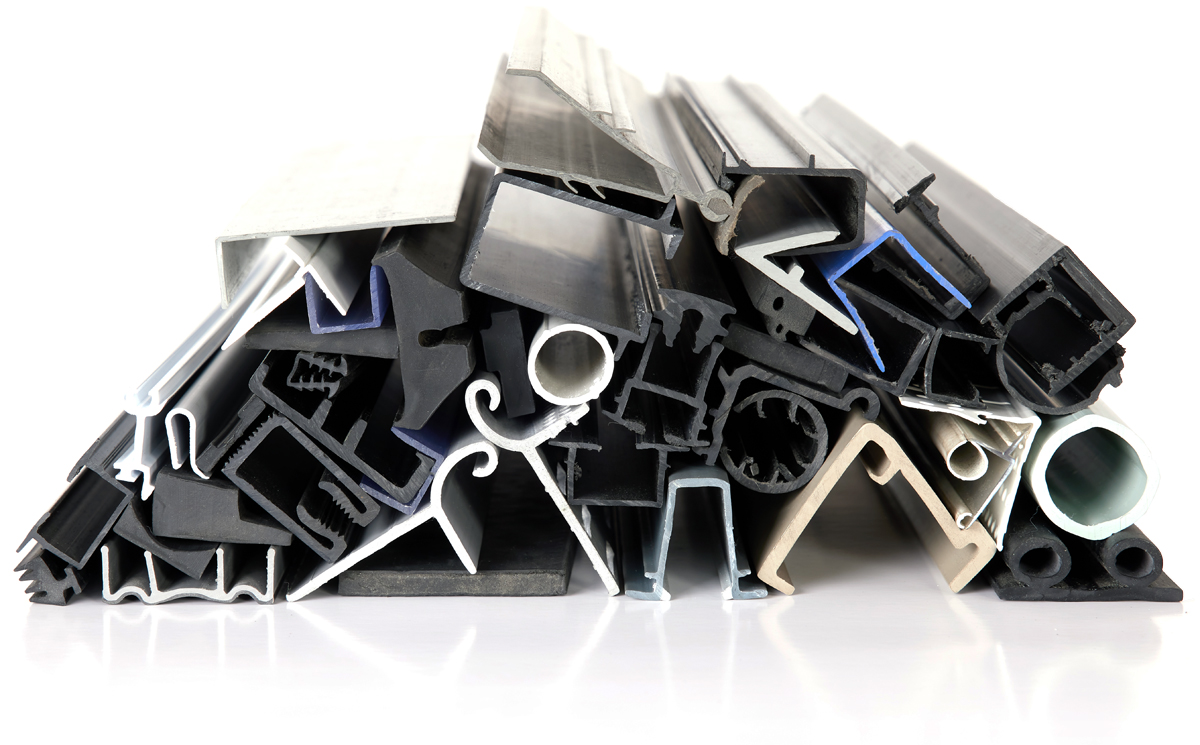Plastic extrusion specialists delivering exactness and quality
Plastic extrusion specialists delivering exactness and quality
Blog Article
A Comprehensive Guide to the Process and Advantages of Plastic Extrusion
In the huge world of manufacturing, plastic extrusion arises as a essential and very reliable procedure. Transmuting raw plastic into continuous profiles, it deals with a myriad of industries with its amazing adaptability. This overview aims to elucidate the detailed steps associated with this method, the kinds of plastic suitable for extrusion, and the game-changing benefits it gives the market. The ensuing conversation guarantees to unfold the real-world impacts of this transformative process.
Understanding the Essentials of Plastic Extrusion
While it may appear complicated at initial glimpse, the process of plastic extrusion is essentially simple - plastic extrusion. It is a high-volume manufacturing method in which raw plastic is thawed and shaped into a constant profile. The procedure begins with the feeding of plastic product, in the kind of powders, granules, or pellets, right into a warmed barrel. The plastic is then thawed making use of a mix of warm and shear, applied by a rotating screw. Once the molten plastic reaches completion of the barrel, it is compelled via a tiny opening known as a die, forming it right into a wanted form. The designed plastic is then cooled, solidified, and reduced into desired sizes, completing the procedure.
The Technical Refine of Plastic Extrusion Explained

Kinds Of Plastic Suitable for Extrusion
The choice of the best kind of plastic is an important facet of the extrusion process. Different plastics use distinct homes, making them a lot more suited to particular applications. Polyethylene, for example, is generally used as a result of its affordable and simple formability. It provides superb resistance to chemicals and moisture, making it optimal for products like tubing and containers. Polypropylene is another prominent selection due to its high melting factor and resistance to exhaustion. For more durable applications, polystyrene and PVC (polyvinyl chloride) are often selected for their strength and longevity. Although these are common options, the selection eventually depends upon the details needs of the item being created. So, understanding these plastic types can significantly boost the extrusion process.
Contrasting Plastic Extrusion to Other Plastic Forming Techniques
Comprehending the sorts of plastic appropriate for extrusion paves the way for a wider discussion on exactly how plastic extrusion compares to various other plastic developing techniques. These include shot molding, impact molding, and thermoforming. Each technique has its one-of-a-kind usages and benefits. Injection molding, for example, is outstanding for developing complex components, while strike molding is ideal for hollow objects like bottles. Thermoforming excels at developing superficial or large components. Plastic extrusion is unparalleled when it comes to producing continual profiles, such as pipelines, gaskets, and seals. It also permits a regular cross-section along the length of the product. Therefore, the selection of method mainly depends on the end-product demands and specs.
Secret Benefits of Plastic Extrusion in Manufacturing
In the world of manufacturing, plastic extrusion uses several significant advantages. One notable advantage is the cost-effectiveness of the procedure, which makes it an economically enticing production technique. Additionally, this technique gives premium product flexibility and enhanced production speed, thus enhancing overall manufacturing performance.
Cost-Effective Production Method
Plastic extrusion jumps to the forefront as an economical production approach in production. This process stands apart for its ability useful source to create high quantities of material quickly and effectively, giving manufacturers with significant cost savings. The main cost advantage is the capacity to utilize cheaper resources. Extrusion uses polycarbonate products, which are much less expensive compared to ceramics or metals. Further, the extrusion procedure itself is reasonably basic, decreasing labor costs. Furthermore, plastic extrusion needs less energy than traditional production approaches, contributing to reduced functional costs. The process additionally minimizes waste, as any type find more info of excess or malfunctioning materials can be recycled and reused, providing another layer of cost-effectiveness. On the whole, the financial advantages make plastic extrusion an extremely eye-catching choice in the production sector.

Superior Item Flexibility
Beyond the cost-effectiveness of plastic extrusion, another significant advantage in manufacturing lies in its exceptional product versatility. This makes plastic extrusion an excellent solution for sectors that call for personalized plastic components, such as vehicle, building, and packaging. In significance, plastic extrusion's product versatility cultivates innovation while enhancing operational efficiency.
Boosted Manufacturing Rate
A substantial advantage of plastic extrusion exists in its enhanced production speed. Couple of other manufacturing procedures can match the rate of plastic extrusion. Furthermore, the capability to maintain consistent high-speed production without sacrificing product high quality establishes plastic extrusion apart from other approaches.
Real-world Applications and Impacts of Plastic Extrusion
In the realm of production, the strategy of plastic extrusion holds profound significance. The financial benefit of plastic extrusion, mainly its economical and high-volume result, has transformed manufacturing. The sector is constantly making every effort for developments in recyclable and naturally degradable products, showing a future where the advantages of plastic extrusion can be retained without jeopardizing ecological sustainability.
Verdict
In final thought, plastic extrusion is a effective and extremely reliable method of transforming basic materials right into varied products. It provides many benefits over various other plastic forming techniques, consisting of cost-effectiveness, high result, marginal waste, and design flexibility. Its effect is greatly really felt in numerous industries such as construction, vehicle, view website and customer items, making it a crucial procedure in today's manufacturing landscape.
Delving deeper into the technical process of plastic extrusion, it begins with the selection of the appropriate plastic material. Once cooled, the plastic is cut into the required lengths or wound onto reels if the product is a plastic film or sheet - plastic extrusion. Contrasting Plastic Extrusion to Other Plastic Forming Techniques
Recognizing the types of plastic suitable for extrusion leads the way for a more comprehensive conversation on exactly how plastic extrusion stacks up versus other plastic developing methods. Couple of various other manufacturing processes can match the rate of plastic extrusion.
Report this page